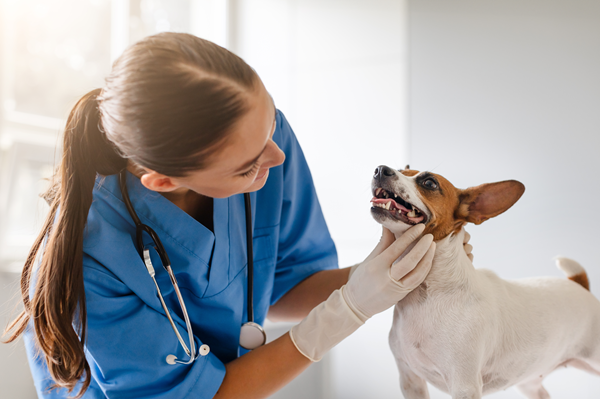
If you’re a pet owner, you probably do everything you can to keep your furry friend happy and healthy. But did you know that dental health plays a huge role in their overall well-being? Periodontal disease is one of the most common, yet overlooked, conditions in pets, and it can cause pain, infection, and serious health complications if left untreated.
By understanding what periodontal disease is, how it progresses, and why managing it is essential, you’re not just protecting your pet’s smile—you’re improving their quality of life, longevity, and even saving on costly vet bills.
A Happier, Healthier Pet Starts with a Healthy Mouth
Periodontal disease is a progressive inflammatory disease of the gums and supporting structures of the teeth caused by bacteria. It begins when plaque—a sticky film made up of food particles and bacteria—accumulates on the teeth above and below the gumline. If not removed, this plaque hardens into tartar (calculus), which leads to inflammation known as gingivitis.
As the disease progresses, bacteria travel below the gumline, damaging the tissues and bone that hold the teeth in place. Over time, this damage can result in painful infections, loose or missing teeth, and even bacteria entering the bloodstream, potentially affecting major organs like the heart, liver, and kidneys.
How Periodontal Disease Progresses (And Why You Should Stop It Early)
Understanding how periodontal disease develops helps you stay ahead of it. The sooner you recognize the signs, the easier (and less expensive) it is to treat.
Stage 1: Gingivitis (Early Stage)
- Mild gum inflammation and plaque buildup.
- Bad breath and slight redness along the gums.
- Benefit of early intervention: Gingivitis is reversible with subgingival cleaning, and potentially reversible in very early stages with frequent brushing.
Stage 2: Early Periodontitis
- Inflammation extends deeper under the gumline, causing loss of bone and soft tissue supports.
- Gums may look swollen or start receding.
- Benefit of intervention now: Prevents painful infections and tooth loss.
Stage 3: Moderate Periodontitis
- 50% of surrounding bone has been destroyed, exposing tooth roots, causing sensitivity.
- Possible pus formation and loose teeth.
- Advanced vet care can still save some teeth, stop progression, and reduce pain.
Stage 4: Advanced Periodontitis
- Severe pain, infection, and tooth loss.
- Bacteria spreads to vital organs, leading to serious health risks.
- By this point, extractions are often necessary; early care could have prevented this.
Why Managing Your Pet’s Dental Health Benefits You, Too
Keeping up with your pet’s oral hygiene isn’t just about their comfort—it saves you from stress, costly treatments, and preventable health problems down the road. Here’s how:
- Saves you money: Regular brushing and checkups help avoid expensive tooth extractions and medical treatments.
- Prevents emergency vet visits: Advanced gum disease can cause abscesses and infections, leading to urgent (costly) care.
- Strengthens your bond: Pets in pain may become irritable or withdrawn. Keeping their mouth healthy helps maintain their playful, affectionate personality.
- A fresher-smelling home: Let’s be honest—bad breath isn’t fun for anyone! A healthy mouth means fresher kisses and cuddles.
Simple Ways to Keep Your Pet’s Teeth (and Health) in Top Shape
- Daily brushing: A few minutes a day can reduce periodontal disease. Use pet-safe toothpaste and a soft brush.
- Annual professional cleanings: Your vet can clean plaque and tartar from UNDER the gumline and assess overall periodontal health with an anesthetized exam and dental X-rays.
- Dental treats and chews approved by the Veterinary Oral Health Council (VOHC): Can help reduce plaque buildup.
- VOHC-approved water additives and sprays: Can reduce bacteria in the mouth, slowing plaque buildup.
- Regular vet checkups: Early detection means easier, less expensive treatment.
By taking these steps, you’re not just improving your pet’s oral health, you’re ensuring a happier, healthier, and longer life for them. And that means more years of love, play, and companionship for both of you!
A few small changes today can make a world of difference for your pet’s future.



